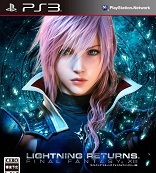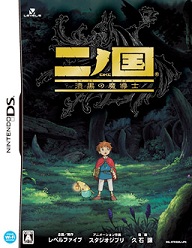Grandia III
PlayStation 2
Reviewed: 05/28/2006
 Grandia III is actually the fourth installment of the series (when counting Grandia Xtreme), and it manages to bring a few changes to the table while still remaining true to the series as a whole.
Grandia III is actually the fourth installment of the series (when counting Grandia Xtreme), and it manages to bring a few changes to the table while still remaining true to the series as a whole.
The plot events in Grandia III range from silly to somber, engaging to disjointed. It’s a storyline that twists and jumps seemingly of its own will. There are too many moments throughout the game in which the plot seems to suddenly jump to a new point with absolutely no exploration of why. As if that weren’t enough, it’s laden with poorly executed use of cliché.
This is unfortunate, as Grandia III does have what could pass as a great plot, were it not for all the skimping on details and feeling like it’s all been heard before, especially near the end of the second disc. There are good moments, including the return of the scenes during meals where large amounts of character development occurs, but each good moment seems to meet its match with an equally disappointing moment. The game also attempts to inject humor in many areas, but most of it simply falls flat. A lot of the “humor” also appears at strange times, such as right in the middle of a very serious part. While some would say this is to break up the tension, it’s mostly unnecessary and distracting. The story is okay, but not the game’s main attraction.
 |
| This is going to hurt the enemy…a lot. |
The Grandia series has always let players enjoy a great battle system, and Grandia III‘s manages to continue this legacy while still adding elements into the proven formula. Enemies are visible on the map, and players will fight them if they come into contact. The party can get a slight advantage in combat by swinging Yuki’s sword to initiate the encounter. Once in battle, there is a ring in the top left, named the IP Gauge, that displays tiny character and enemy portraits spinning clockwise. This gauge displays the turn order of all the characters on the screen, and allows for some great strategies. Players can select a wide range of actions: Combo, Critical, Item, Defend, Flee, Magic, Special Move, Use Weapon, and Orb. Some of these options don’t become available until later in the game, but the majority are easily accessible for combat.
Most of the time, players will be using the Critical and Combo commands. A Combo attack allows players to dish out a good amount of damage, while a Critical attack can knock an enemy back in the turn order, or even cancel their actions if they are in the middle of an action. If players are lucky enough to cancel an attack while having another character attacking with a combo, they will see an aerial combination, which is new to the series. These aerial combinations allow players to do a huge amount of damage, as one character knocks the enemy into the air and the other characters pound it into oblivion. This can even lead to an impressive “Aerial Finish” which shows off some pretty incredible attacks. Magic is also a huge part of the game, like many RPGs, and can of course be extremely powerful.
Finally, there are Special Moves, which are very powerful attacks that characters can learn by building up their Special Levels and using Combo attacks. These Special Moves can sometimes destroy entire groups of enemies, allowing players to finish fights quickly. All in all, the battle system is easily one of the best there is. The huge amount of options available to players, combined with the great strategic potential and fantastic animations all show that GameArts still has it.
The only truly frustrating part of Grandia III‘s gameplay is the dungeon design. Every single area is extremely linear and allows for no exploration other than the occasional side path that leads to an item. The game also conveniently provides a map in the corner that shows each section of the dungeon as it’s entered in its entirety. There is no fog or obstacles covering key areas, players can simply follow the map from point A to point B without having to do a single thing other than follow directions. It is a small gripe, but if GameArts had allowed players the chance to truly explore the environments, the gameplay would have been nigh onto perfect.
 |
| …seconds before the nuclear explosion that ends the game. |
Grandia III‘s graphics are incredible. It is clear GameArts pushed the limits of the PlayStation 2’s capabilities. The environments all look fantastic, with tons of gorgeous details simply bursting from every scene. Battle animations are some of the best out there. Magic spells look truly devastating, and the aerial combination attacks are a wonder to behold (especially when players unleash an Aerial Finish), and the huge amount of work put into the graphics is obvious. The only gripe here is that the characters themselves lack some facial detail, though their outfits are extremely detailed. It is a strange oversight to have obviously put so much care into the graphics and then put so little into the characters themselves, but that’s a small thing compared to the overall superior graphics.
Grandia III has a forgettable score. The soundtrack is never offensive, but doesn’t have anything worth remembering. There are a few story points where the music is good, but there really is nothing that compares to the quality of many game soundtracks today. The voice acting is also subpar. While some of the characters’ voices match them, some of the main characters (Miranda, Alfina) have voices that simply don’t match or are highly annoying.
The experience players will get from Grandia III is a mixed one. The battle system alone makes the game definitely worth playing, and the eye candy is abundant, but players will likely feel disappointed at the huge plot holes and average sound. Grandia III is a game that comes recommended, but with a warning: don’t expect an enthralling story.
-Joseph Wartick
| Score Breakdown | ||
| Overall Very Good Out of 10 See our Review Criteria |
Gameplay | Excellent |
| Story | Average | |
| Graphics | Excellent | |
| Sound/Music | Average | |
| Replay Value | Average | |
| The Verdict: 7 | ||








